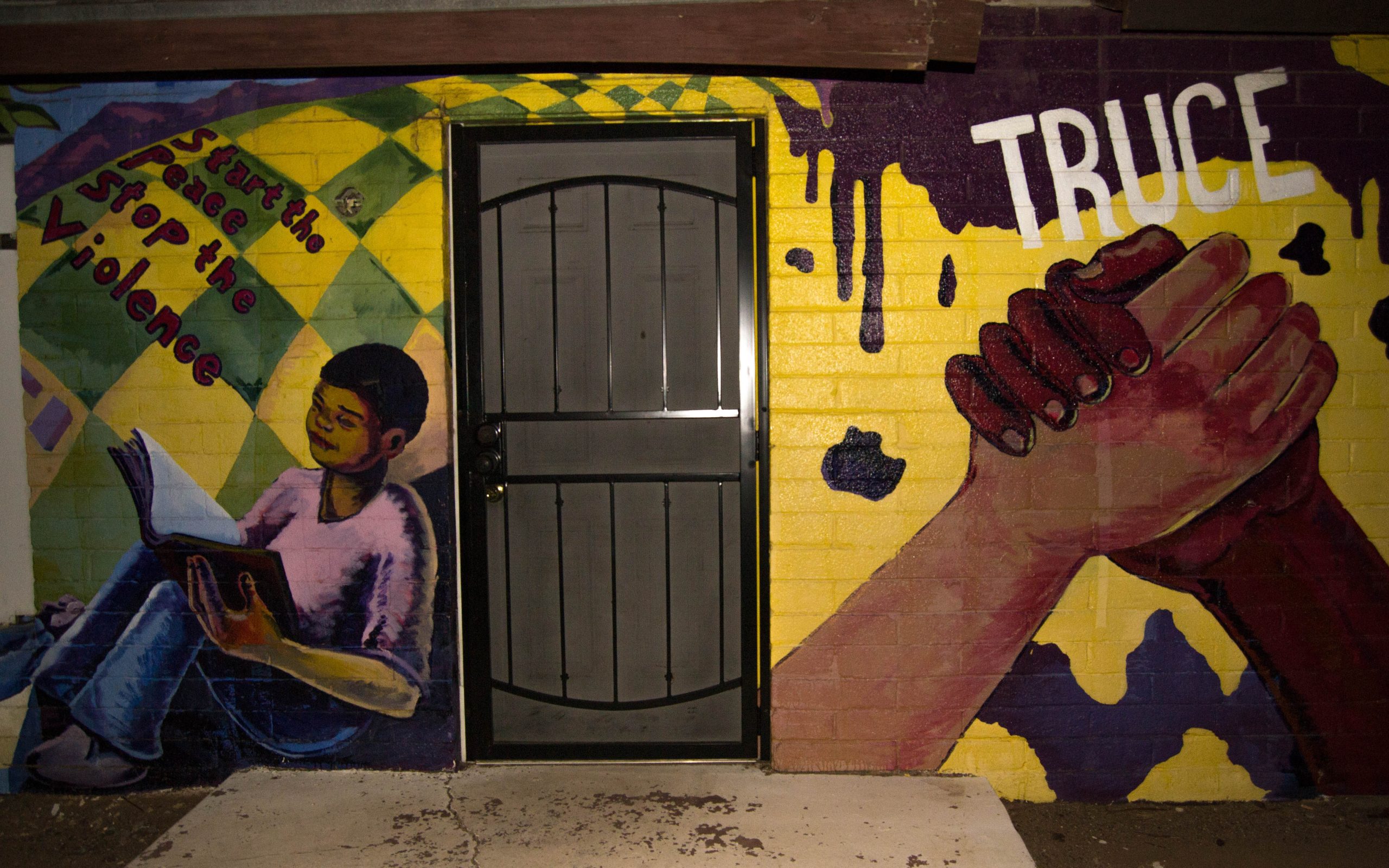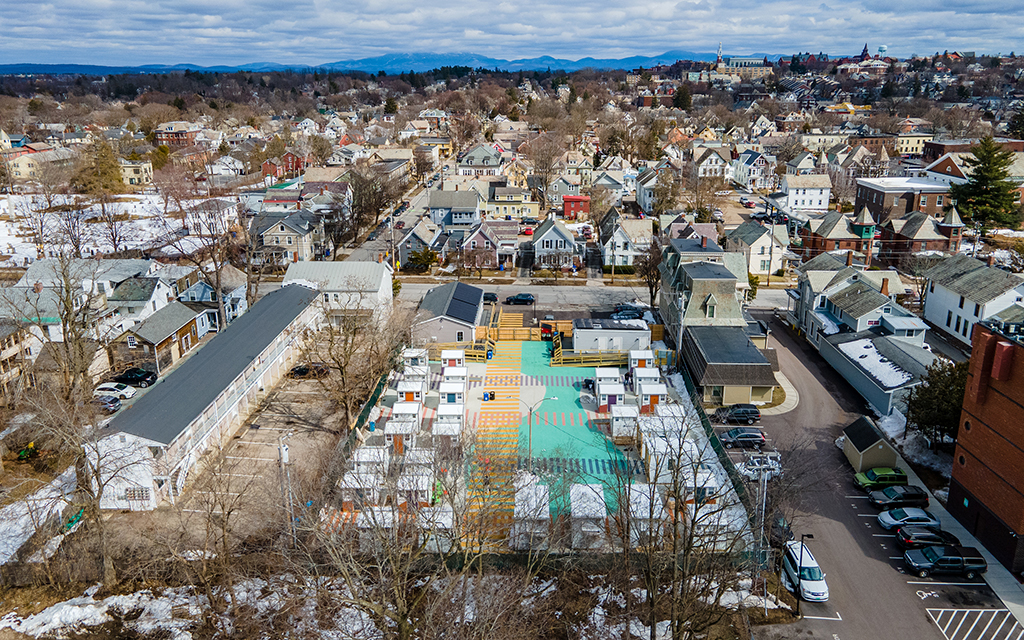Washington state-based Pallete is proud to have sent a team to build 3,800 cabins. (Photo credit: Morgan Lieberman)
TUCSON — For years, J Kristin Olson-Garewal has been concerned about the growing number of homeless people walking the streets and sitting in parks in Tucson.
Her son, Raj Garewal, worked at a homeless service center in Los Angeles, addressing even more acute homelessness issues. But Tucson didn’t seem to have an answer, so Garewal showed his mother a video of a tiny house that could be set up in just 45 minutes and started tackling homelessness in a California city.
After watching this video Olson GarewalHe is also a doctor and believes that this simple method of building a house palette A shelter could be the solution to a problem she sees as inhumane and only getting worse.
“We spoke with people working on homelessness and with city officials. No one was doing anything, and nothing was being done on the scale needed to remedy the enormous housing shortage. So we simply decided to do this,” Olson Garewal said.
In August 2021, Olson Garewal and his son homing project. The organization plans to build small 64- or 100-square-foot shelters that can be assembled in hours.
The Homing Project is one of two nonprofit organizations in Tucson that are trying to address the growing homeless population that is affecting the state’s cities. According to one study, Arizona’s homeless population increased 23.4% between 2020 and 2022. 2022 report According to the U.S. Department of Housing and Urban Development. In 2022, Arizona’s homeless population was estimated at 13,553, of whom 59.2% had no shelter.
Related article

Pima County, which includes Tucson, saw an increase in the total number of people experiencing homelessness overnight. twenty one%increased from 1,372 in 2019 to 1,660 in 2020, according to tucsonaz.gov.
The Homing Project will initially house 20 people (mostly individuals) as a trial to work out bugs and capture data in case costs or other issues arise, Olson Garewal said. It’s a plan.
Each shelter includes heating and cooling, insulation, 1 or 2 beds in a single unit, windows, a self-contained solar energy system, and a secure locking door. The shelter village’s common facilities, which have yet to be built, will include dining, laundry, and bathrooms. And the community is gated. When the house is no longer needed, it can be disassembled and packed flat for storage.
Olson-Garewal said the project is funded entirely by private donations and foundation grants.
“This land is a free long-term lease,” she explained. “Our projected budget is her $1.4 million to start and run a trial village for a year. We rely heavily on volunteers. I am involved.”
Currently, the organization will focus exclusively on Tucson, but hopes to keep the site open for as long as resources permit, about 100 units at most. They will not only build housing for the homeless, but will also provide other services.
“Our on-site partner, Catalytic Health Partners, focuses on treating any symptoms that are holding them (residents) in mind, to keep people from living paycheck to paycheck, to earn a living wage. “Once there is an emergency, we will never forget to pay the rent,” Olsson-Garewal said. “Eventually, a second phase of really tiny homes and apartments may begin.”
The organization is aware of other cities and states using this housing method, and Olson Garewal has visited several of them. Based in Washington State, Pallete is proud to have its own team in construction. 3,800 cabins – including over 100 We have established shelter villages in 21 states and over 85 cities. Most of the villages are in California, but the company lists palette villages in a wide range of states, including Wisconsin, South Carolina, and Vermont. Arizona does not yet have a shelter for Pallet.
“We visited a few of them in California and found that the biggest problem was not addiction or mental illness, but simply lack of housing. At times, we planned stays of three to six months to treat any symptoms and help each resident find a job and then settle down,” Olsson-Garewal said. “But then we found that there was no housing to move to. ”

Palette has built over 100 shelter villages in 21 states and over 85 cities, including Vermont. (Photo credit: Todd Beltz Photography LLC)
Another organization in Tucson that is committed to helping the homeless community is Casa Maria Soup Kitchen. It is part of the Catholic Workers Community established in the city in 1983. Community of Casa Maria His worker Brian Flagg is part of the Soup Kitchen. kitchen since its inception.
“We believe that the key to doing social justice is community organizing, knowing and talking to the affected people in your area. said Flagg. “So what we need to do is organize within the people we serve and the neighborhoods we live in, and now we’re dealing with the Tucson housing crisis and the gentrification of the downtown area. is to do.”
Flagg said the organization relies entirely on individual donations. The company has launched a campaign to raise $7 million to buy six motels in Tucson, which it plans to convert to 350 units for those in need.
So far, Casa Maria has purchased one 20-unit hotel known as El Camino.
“South Tucson, and Tucson included, is right in the absolute low end of the metropolitan area rental market,” Flagg said. “His 20 units are kind of at the bottom of affordable housing and will remain, but we want to add more.”
Immediate plans are to improve the hotel, including adding kitchenettes to units. Flagg said the main focus is on lowering Tucson’s homeless rate.
The Arizona Department of Economic Security announced that of the 13,553 homeless people counted in the state in January 2022, 2,227 were in Pima County, accounting for 16.4% of the state’s total.
Flagg sees the homeless problem as getting worse, especially in Tucson.
“It can be traced back to rents. Rents have gone up,” Flagg said. “What we really need in Tucson, and I think all of Arizona, is rent control.”
Communities with soup kitchens also have clinics that provide medical care in their kitchens, and across the street is a county center dedicated to helping people in the homeless community.







